05 Apr Can’t Stand The Heat? Avoiding Heat Stress In The Workplace
Any operation which involves high temperatures, radiant heat, contact with hot objects, and strenuous activity can cause heat stress. Unfortunately, thousands of workers become ill, or die, from work-related heat exposure annually.
Luckily, heat stress is preventable. By implementing proper measures, educating supervisors and employees, and creating a heat-conscious workplace you reduce risk and improve workplace safety.
Why is Heat a Hazard?
Normally, the body rids itself of excess heat through increased circulation to the skin and perspiration. However, when air temperature nears or surpasses body temperature, the body stores it instead. This causes a rise in core temperature and heart rate.
Without relief, the person can become disoriented, irritated, and sick. Sicknesses include a rash, cramps, heat exhaustion or stroke, which can be fatal. Too much heat also increases the chances of workplace injuries due to disorientation, excess perspiration which makes tools and equipment slippery, and burns or scalds from hot machinery.
Preventing Heat Stress
Employers can utilize many methods to reduce risk of heat exposure. These include engineering controls, work policies and protocols, Personal Protective Equipment, and training.
Engineering Controls
Employers have a responsibility to protect the health and safety of employees. Modifying physical facilities, equipment, and processes can reduce exposure and improve workplace safety.
Companies should consider whether they can improve ventilation in hot areas. Venting moisture and heat outdoors using exhaust fans or hoods can lower risk substantially.
Can you air condition or use fans to lower room temperature? Is it possible to insulate hot surfaces to reduce radiant heat exposure? Are barriers or shields feasible between equipment and workers? An in-depth review of the workplace can pinpoint problem areas so you can devise solutions.
Work Policies & Protocols
Creating a safe workplace begins with safety awareness, followed by thorough safety policies, and finally implementation of proper work protocols.
Warning signs in hot areas increase awareness regarding the potential for heat stress. Simple protocols such as scheduled cool-downs and making water readily available can reduce employee risk. Acclimatizing new and returning workers to high temperature environments also prevents heat stress.
Employers should strive to increase workloads slowly and supervisors should also schedule more frequent breaks as work proceeds through the day. Workers need to drink small amounts of water frequently while working in the heat. When possible, supervisors should also limit heavy exertion until cooler times of the day or rotate workers through less strenuous job functions.
Personal Protective Equipment
The company health and safety officer may train employees in the use of Personal Protective Equipment, but the person overseeing employees is ultimately responsible for their well-being.
Supervisors must reinforce and monitor the use of PPE appropriate for the job even though the last thing most employees want is more clothing when they’re already hot. Insulated gloves and suits, hard hats, reflective clothing, respirators, face shields, and thermally-controlled clothing may be requirements for performing work safely. However, supervisory inspections must include monitoring heat stress due to heavy or cumbersome safety equipment.
Training
The risk of heat stress increases with exposure and the symptoms are often subtle initially. Employees and supervisors need thorough training to understand the hazards of heat exposure and what to do if they spot trouble.
Training should include the seriousness of the risk, symptoms, and possible heat-related illness. More importantly, training should demonstrate preventative measures that could save employee lives. These include the vital importance of water, heat acclimatization in the workplace, and how to report heat-related concerns to supervisors.
Of course, both employees and supervisors need a thorough understanding of the proper procedures used to respond to heat-related illness, including emergency responses.
OSHA recommends that companies with employees working outdoors stress the importance of caution when heat and humidity rise simultaneously. It amplifies the risk of heat stress. Following the heat index reflects risk more accurately than temperature alone.
Improved workplace safety reduces insurance costs, improves employee retention, and reinforces your brand. Managing risk requires consultation, diagnosis, and proactive planning and Gilbert’s Risk Solutions can guide you. We’ve helped companies for over 160 years, and we’re here for you too.


No Comments